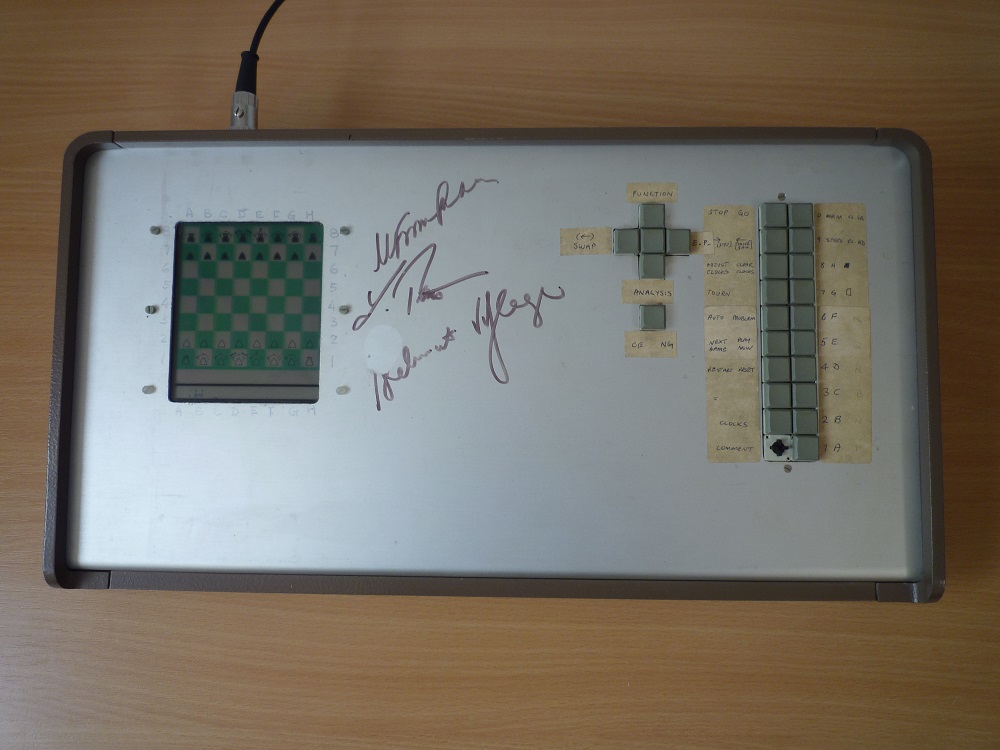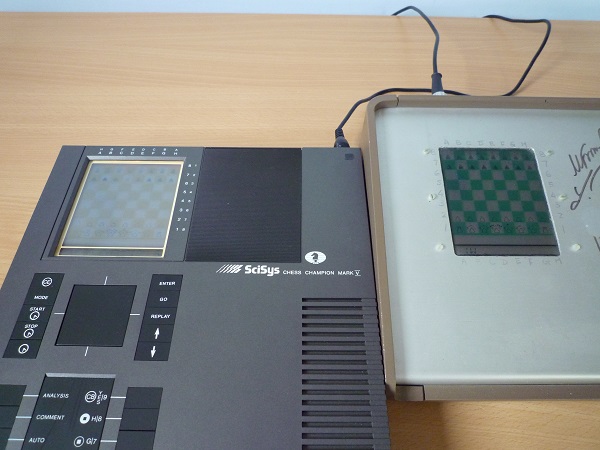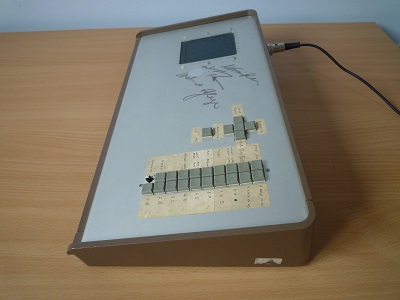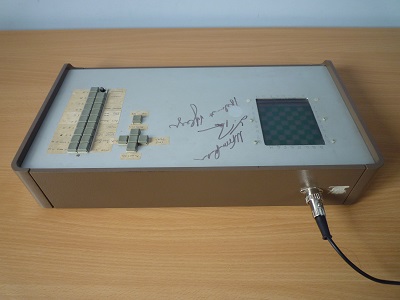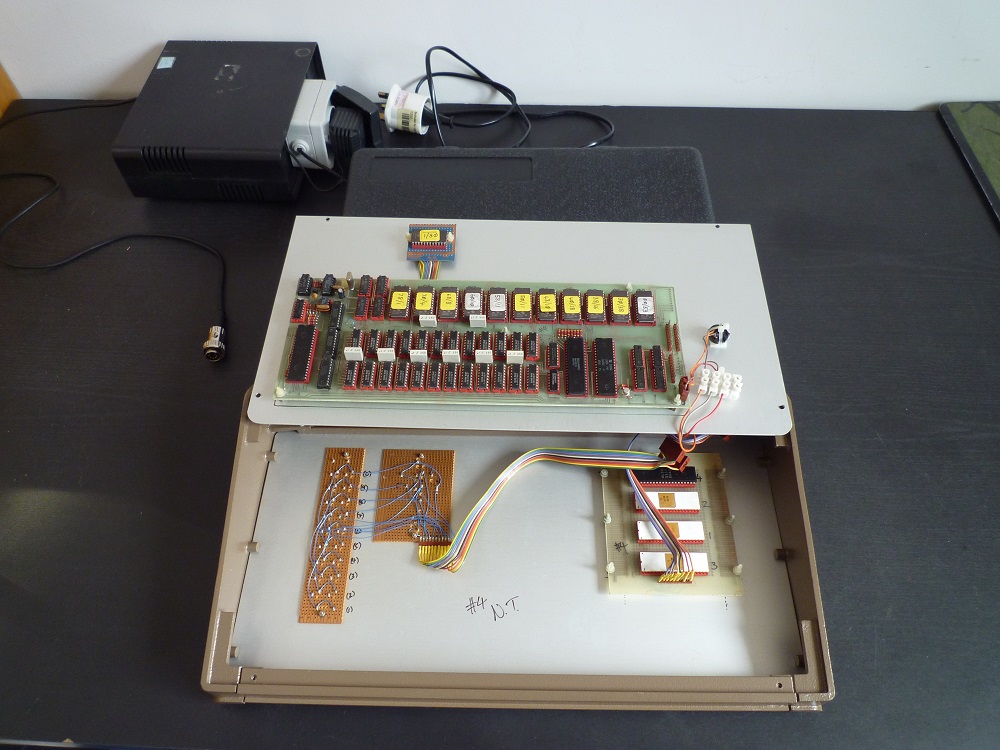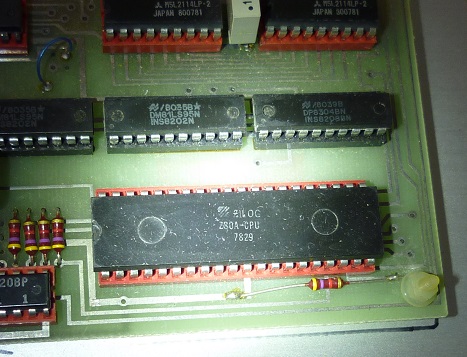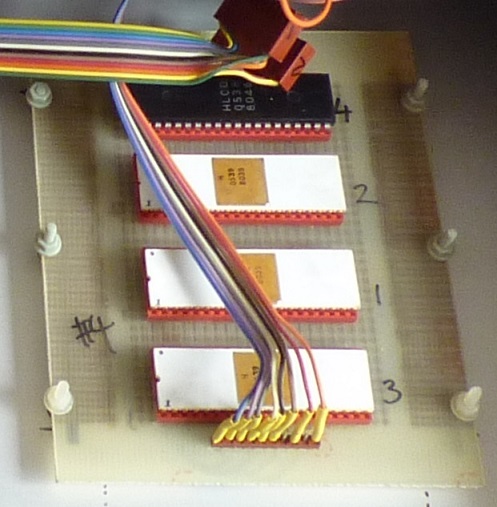|
There is reason to believe that this chess computer is unique. It is a prototype, forerunner of the SciSys Chess Champion Mark V which won the World Microcomputer Chess Championship (Commercial Group) at Travemunde, West Germany, 21st - 27th September 1981. Several prototypes were built. In particular a team of prototypes contested the Asian Cities Team Championships held in Hong Kong in February 1981. This one stayed in Europe where it was demonstrated at tournaments and exhibitions, and shown to journalists and prospective commercial partners.
Back in the 1980s it was usual for development machines and prototypes to be scrapped or cannibalised for parts after their immediate purpose was fulfilled, and it is probable that all the other prototypes will have been scrapped. That this particular prototype survived is down to Kevin O’Connell (link 1) and the fact that three chess Grandmasters autographed the Prototype in Hamburg, West Germany in April 1981. Even then it is probably the fact that Mikhail Botvinnik’s was one of those autographs which saved this particular machine. Botvinnik was World Chess Champion 1948-57, 1958-60 and 1961-63, one of the greatest players of all-time and teacher of World Champions Karpov, Kasparov and Kramnik, in addition to being a computer chess expert. So it was the autograph(s) rather than the Prototype itself that was thought sufficiently valuable to keep stored in a cellar, a cupboard and a storage box through the 1980s and 90s. With the more recent resurgence in interest in old chess computers perhaps it is the machine itself, rather than the autographs, which deserves some attention now.
In 2000 the Prototype was included in an internet auction, bundled with a Mark V, just one item in an extensive collection of chess books, equipment and memorabilia which Kevin O’Connell had decided to clear (link 2 - catalogue. See item 118). The Mark V and Prototype did not sell but they resurfaced again in 2005 when Lesley O’Connell, Kevin’s wife, placed them on Ebay. The lot was sold to a German collector for £314.12, without the Prototype’s power supply, and with no guarantee that it worked (link 3). In fact it did not work and there is an email to the buyer from Lesley and Kevin O’Connell explaining its history (link 4). However it was then expertly repaired by Arno Kreuzberg who built a new power supply for it, and it has been well looked after ever since. In 2009 the owner played it in an online tournament, where it scored 5/9 in an U1500 Elo group (link 5 and link 6).
Now the Prototype is back in Britain where it was originally developed and programmed. It’s history is probably as well documented as any chess computer of that pre-internet era, thanks to the involvement of prolific authors David Levy and Kevin O’Connell. On this webpage much of the available information is brought together to give an explanation and the history of the Prototype. At the bottom of the page are links to these and other relevant articles and websites.
|
